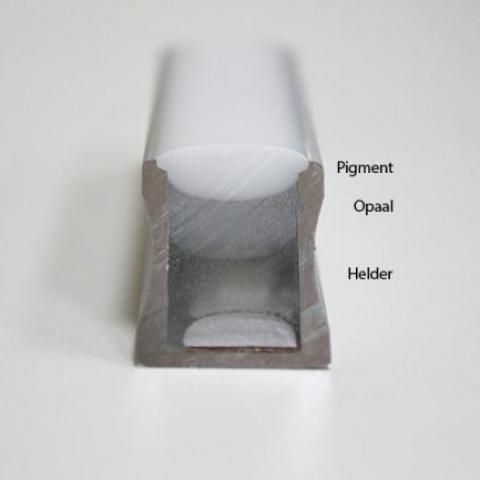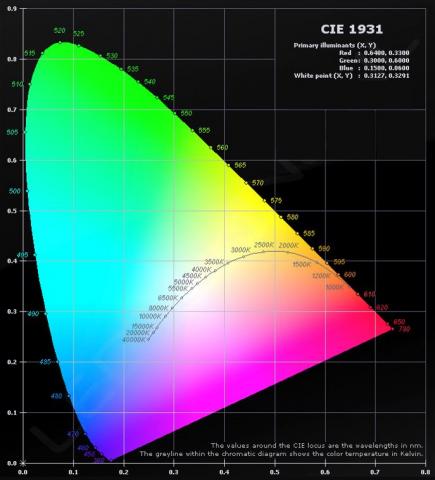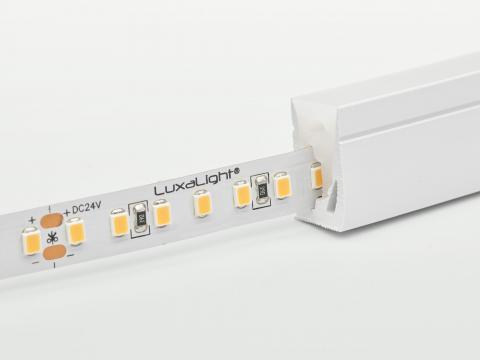LuxaLight LED Engine RGBW Protected (24 Volt, 36 LEDs, 5050, IP64)
Technical specifications
| 24V | |
|---|---|
| 5cm | 34510 lx |
| 10cm | 14080 lx |
| 15cm | 7229 lx |
| 20cm | 4486 lx |
| 25cm | 3023 lx |
| 30cm | 2280 lx |
| 24V | |
|---|---|
| 5cm | 601.212 umol/m2 |
| 10cm | 244.775 umol/m2 |
| 15cm | 125.704 umol/m2 |
| 20cm | 78.0229 umol/m2 |
| 25cm | 52.5608 umol/m2 |
| 30cm | 39.6553 umol/m2 |
| Symbol | Function |
|---|---|
| V+ | V+ |
| R | Red channel |
| G | Green channel |
| B | Blue channel |
| W | White channel |
Beta value: 3950
Product description
The LuxaLight Industrial LED Engine is specifically designed for applications requiring high light output, precision, and optimal wavelength control. This LED engine is equipped with LEDs in four distinct wavelengths:
- Blue (460nm)
- Green (515nm)
- Red (625nm)
- White (2625K)
Each wavelength can be individually controlled, making it the ideal solution for research environments where precise light control is essential.
Key Features:
- Individually Controllable Wavelengths: The LuxaLight LED engine allows for the independent control of each wavelength—460nm (blue), 515nm (green), 625nm (red), and 2625K (white). The ability to control these channels separately provides unmatched flexibility for applications requiring different light conditions for various processes or experiments.
- Ideal for Research Applications: The ability to individually control each wavelength makes this LED engine perfect for a wide range of research purposes, including plant growth studies, cell research, and light-based experiments in the biological sciences.
- High Light Output: The LED engine delivers high light intensity across all four wavelengths, ensuring effective results in scientific research that requires specific light wavelengths.
- Efficient and Reliable Performance: The engine provides reliable, efficient performance with consistent light output, making it ideal for long-term use in research environments where constant and precise light control is required.
- Real-Time Temperature Monitoring via NTC Sensor (with Pollux Industry): The integrated NTC sensor continuously measures and adjusts temperature. When combined with the Pollux Industry controller, it ensures optimal operating conditions, prevents overheating, and ensures the LED engine continues to perform at its peak to generate the highest radiation.
- Flexible Integration: Designed as a semi-finished product, this LED engine can be easily integrated into existing systems or enclosures, offering flexibility for various applications in scientific research setups.
Applications:
Blue Light (460nm):
- Plant Growth and Photosynthesis: Blue light (460nm) is crucial for chlorophyll production and enhancing photosynthesis in plants. It is particularly effective during the vegetative phase of plant growth, making it ideal for plant research, vertical farming, and controlled agricultural environments.
- Marine Research: Blue light is used to study marine organisms, especially in aquariums and marine biological research, as it mimics natural ocean lighting conditions.
- Cellular and Molecular Research: Blue light can be used in cellular studies, particularly in research related to photoreceptors and biological responses to specific wavelengths.
Green Light (515nm):
- Plant Growth Optimization: Green light (515nm) plays a secondary role in photosynthesis but is essential for optimal plant growth as it penetrates deeper into leaf tissues. This makes it important for plant development studies and optimizing growth conditions in agricultural research.
- Insect Behavior Studies: Green light is known to attract certain insect species and can be used in entomological research to study insect behavior and light interaction.
- Aquatic Research: Green light can also be used in aquatic ecosystems to study the growth of algae, aquatic plants, and other biological processes, as it simulates natural light conditions in water.
Red Light (625nm):
- Photosynthesis and Plant Blooming: Red light (625nm) is essential for promoting flowering, fruiting, and overall plant development. It is especially important in plant research focused on photomorphogenesis (plant growth in response to light) and can be used in controlled environments to regulate the blooming and growth cycles of plants.
- Tissue Culture and Cell Regeneration: Red light has been shown to stimulate cell regeneration and promote tissue growth, making it useful in biological research, particularly in wound healing, cellular regeneration, and tissue engineering.
- Medical Research: Red light is commonly used in medical and therapeutic applications, such as photobiomodulation (PBM) for pain relief, wound healing, and skin rejuvenation.
White Light (2625K):
- General Lighting for Research Labs: White light (2625K) provides broad-spectrum lighting suitable for general lab illumination, ensuring sufficient visibility for a variety of research activities.
- Agricultural Research: White light, in combination with other wavelengths, is used in comprehensive plant growth studies, particularly in experiments requiring natural or full-spectrum light for extended plant development research.
- Behavioral and Biological Studies: White light is ideal for a range of biological studies, including research on circadian rhythms, behavioral patterns, and organisms' general responses to light exposure.
Benefits:
- Precise Light Control: Each of the four wavelengths—460nm (blue), 515nm (green), 625nm (red), and 2625K (white)—can be controlled independently, offering unprecedented precision for research applications requiring specific light conditions. This advantage allows researchers to optimize light levels for each wavelength based on their particular needs.
- High Output for Effective Research: The LED engine delivers high light intensity across all wavelengths, making it ideal for studies requiring powerful lighting, especially in plant research and biological applications.
- Flexible Integration: The semi-finished design makes it easy to integrate the LED engine into existing systems, offering versatility for various research and scientific applications.
- Reliable Long-Term Performance: The LuxaLight LED engine ensures consistent performance with efficient energy use, making it ideal for intensive research environments requiring long-lasting and dependable lighting.
- Temperature Monitoring for Optimal Performance: The integrated NTC sensor works in conjunction with the Pollux Industry controller, ensuring continuous temperature monitoring, preventing overheating, and maintaining peak performance over time. This helps maximize the LED engine's output, essential for maintaining high performance in a dynamic environment.





